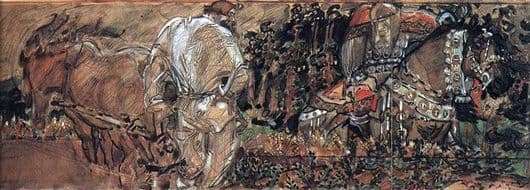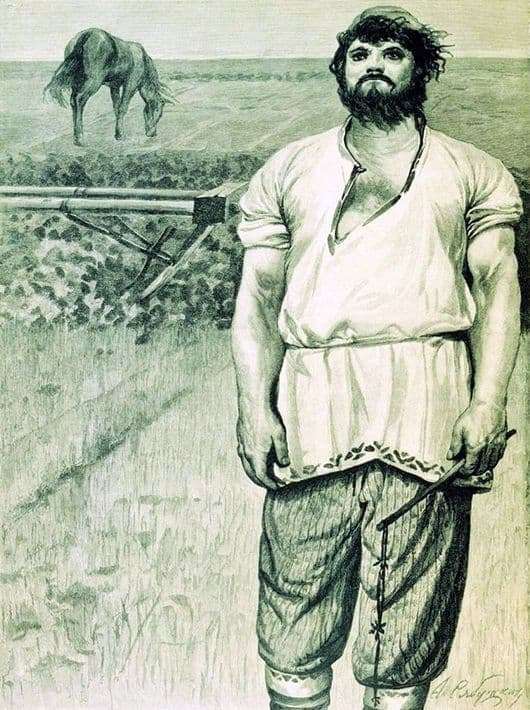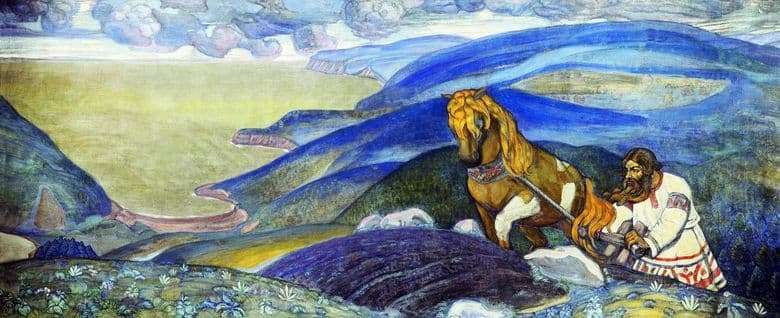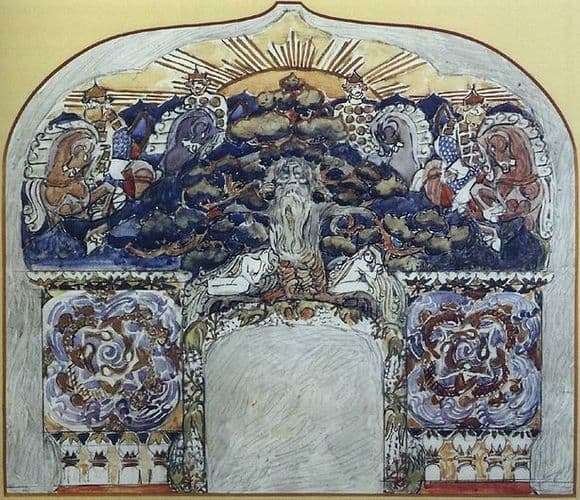
Vasiliev was hard enough to portray Mikula Selyaninovich, an ordinary rural peasant warrior, without pointing to his somewhat divine beginning. Before writing pictures, he spent time in the archive, so that the picture did not have a single unreliable detail.
The painting “Volga and Mikula” was created after Vasilyev finished all the work, which depicted the images of all the heroes from the environment of Prince Vladimir. Now the artist needed to write a work that was filled from beginning to end with a meaningful load, thanks to which songs and warband epics were sung. Thus, this canvas was filled with a large, but at that time, a simple meaning.
The painting depicts Mikula Selyaninovich, who according to legends was so huge and great that he could not catch up even on horseback Svyatogor and Volga, despite the fact that Mikula walked on foot. In its huge image, compared with the bogatyr, the meaning of a simple peasant peasant who works on his land, plows her himself, then sows, and if he needs to protect his land, he will stand up for protection.
Plowman Mikula is portrayed more, not only because of his phenomenal parameters, which his mother-land rewarded, but also because without him, in fact, they would starve and be without food, all the same Russian heroes. Thus, not only the image of the hero, but also the ordinary Russian peasant was sung.
Volga sits astride a horse, and in comparison with Mikula has quite modest proportions, his helmet resembles the dome of the Orthodox Church, and the red color of his cape, shield and spear are distinctive among the heroes who most often loved this particular color. The picture perfectly finishes a whole series of epic Russian epics, but the master does not stop there.
Description of the painting by Konstantin Vasilyev “Volga and Mikula”







